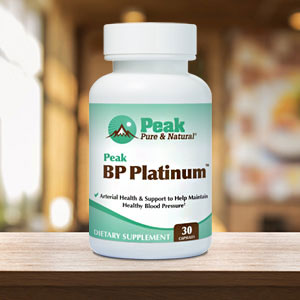Get Easy Health Digest™ in your inbox and don’t miss a thing when you subscribe today. Plus, get the free bonus report, Mother Nature’s Tips, Tricks and Remedies for Cholesterol, Blood Pressure & Blood Sugar as my way of saying welcome to the community!
Air pollution: What you should know about this silent threat

Millions of people die every year worldwide due to air pollution and the diseases it causes. In fact, the particulates floating around in the air we breathe have not only been associated with asthma and lung diseases but also diabetes and heart attack.
Research shows that in the U.S. alone, 50,000 people will die this year due to one particular type of air pollution, a silent killer known as PM2.5.
I’m not telling you this to give you one more thing to worry about — but to share some insight on how you might protect yourself…
No safe level
There are different types of air pollution, and they are often categorized by size.
They are made up of particulates — atmospheric aerosol particles or particulate matter (PM). Sources of these particulates can be natural or man-made chemicals.
PM2.5 is so fine you never even know you’re inhaling it. And that’s why it’s particularly deadly.
Its small size means billions upon billions of them could fit inside a single red blood cell. This means it can slip deep into your bloodstream, your lungs and other organs, leading to respiratory disease, heart attack and death.
PM2.5 is responsible for killing more people across the world than any other type of pollution. That’s a big statement, considering that the World Health Organization (WHO) classifies all particulates as Group 1 carcinogens.
Research has shown that there are no safe levels of PM2.5. A 2013 study involving over 300,000 people found that for every 10 μg/m3 increase in levels of PM2.5 in the air, the incidence of lung cancer went up by 36 percent.
Start protecting yourself from PM2.5 now
The good news is that despite how pervasive and deadly PM2.5 is, you can protect yourself:
- Take B vitamins
A ground-breaking study discovered that people who took B vitamins reversed the adverse health effect of air pollution on their heart and immune system. The per-day intake of vitamins used in the study were:
2.5 mg of folic acid
50 mg of vitamin B6
1 mg of vitamin B12
2. Add antioxidants
Air pollution releases free radicals in your body, which can lead to disease. Increase your antioxidant intake using food sources like berries, green tea and leafy veggies.
3. Avoid air pollution whenever possible
Don’t spend time outside when air pollution levels are high; avoid sitting in heavy traffic when possible.
4. Consider indoor sources of pollution
Flame-retardant fabrics and the chemicals used in everything from mattresses and sofas to carpeting can increase pollution exposure. Your couch may be the biggest piece of furniture adding toxins to your indoor air.
Use these easy tips to help keep air pollution’s deadliest particulate from stealing your health and your life.
Editor’s note: Discover how to live a cancer prevention lifestyle — using foods, vitamins, minerals and herbs — as well as little-known therapies allowed in other countries but denied to you by American mainstream medicine. Click here to discover Surviving Cancer! A Comprehensive Guide to Understanding the Causes, Treatments and Big Business Behind Medicine’s Most Frightening Diagnosis!
Sources:
Particulate Matter (PM) Pollution — EPA
Air pollution: The silent killer called PM2.5 — McGill
HOW TO PROTECT YOURSELF FROM DIABETES-CAUSING AIR POLLUTION — Easy Health Options
THE VITAMIN THAT UNDOES THE HEART DAMAGE AIR POLLUTION DOES — Easy Health Options
Outdoor Particulate Matter Exposure and Lung Cancer: A Systematic Review and Meta-Analysis – Environmental Health Perspectives
Revealed: UK government failing to tackle rise of serious air pollutant — The Guardian
Health and Environmental Effects of Particulate Matter (PM) — EPA
Air pollution and lung cancer incidence in 17 European cohorts: prospective analyses from the European Study of Cohorts for Air Pollution Effects (ESCAPE) — THE LANCET ONCOLOGY














